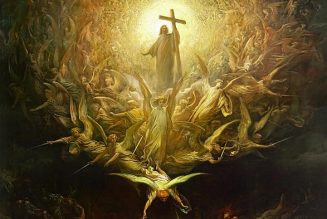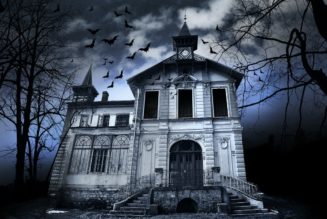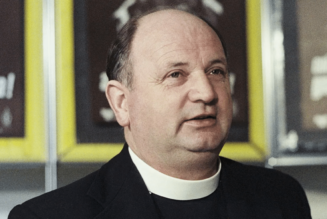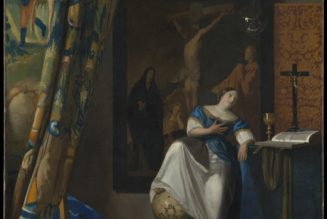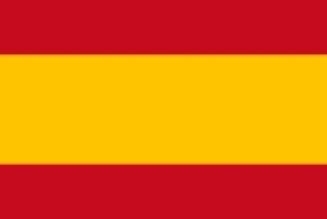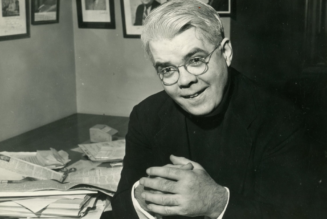The much beloved Virgin of the Forsaken, the city’s patroness, presides over the whole structure. In restoration works just a few years ago, it was discovered that the original silver coins donated by the poor worker are embedded in the monstrance.
This momentous treasure normally greets visitors who come to the cathedral’s museum, but it is most seen when it makes its way through the streets of the city on Corpus Christi, bringing Christ to the people.
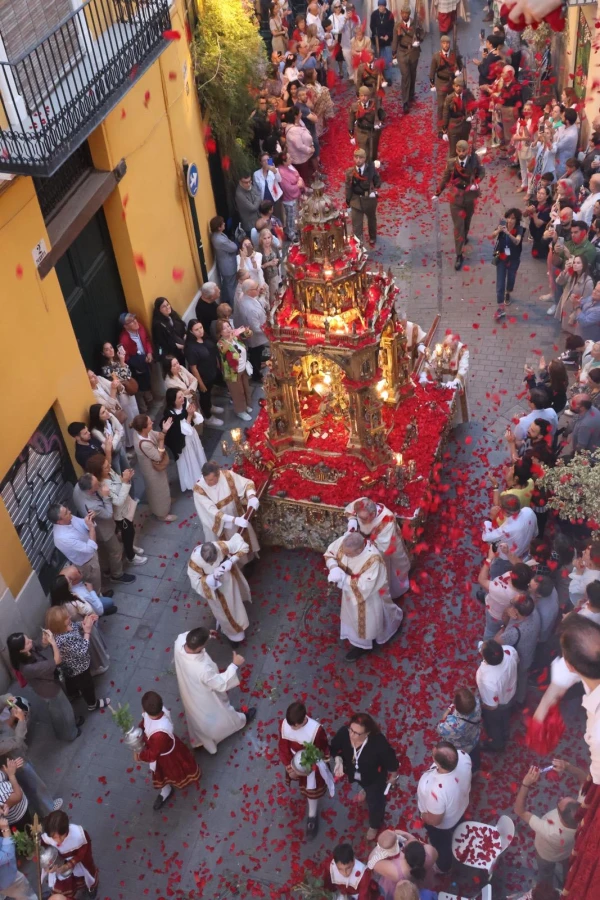
As Jesus passed by this year, one member of the faithful, Carlos Sancho, who was only a youth in the years the monstrance was first used, remembered the symbolic coins donated by that laborer to León. Embedded now in the monstrance, he recalled, “they mean that the monstrance could never be sold, because the money would have to be returned to all the families that donated.”
A mini-catechesis
The procession itself is a mini-catechesis: Among those leading the miles-long group is the “Moma,” dressed all in white and crowned with white flowers but surrounded by the dancing, black-veiled images of the seven deadly sins. The Moma, representing virtue, has to vanquish the tempting evils.
Then come the stories of Scripture: the archangel Michael, Noah with his dove, David with his harp, the minor and major prophets, Jonah carrying a large fish, Judith with Holofernes’ severed head, and Zechariah and Elizabeth begin the New Testament, followed by their son John the Baptist. The four evangelists carry their respective symbols. Saints of the Eucharist and saints particularly linked to Valencia take part. A program distributed for free helps the faithful and spectators to follow the stories.
The elders who stand before the throne of God in the Book of Revelation are a particularly notable group, as they carry 35-pound candles that stand about 6 feet tall. These bearded, white-clad men are among the last figures of the procession, indicating that Jesus is about to arrive.
A large group of vested priests come first, and then a group of sacristans creating a cloud of incense. Finally, Jesus arrives as flower petals rain down on the monstrance, thrown by the faithful gathered on their balconies and those lining the streets.
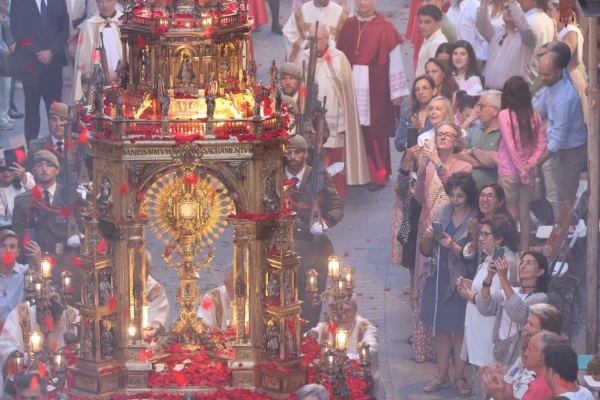
Acts of reparation not ‘obsolete’
(Story continues below)
Subscribe to our daily newsletter
Last month, Pope Francis noted the 350th anniversary of the apparitions of Jesus to St. Margaret Mary Alacoque, recalling how Christ asked the French nun for “acts of reparation.” The pope called making reparation a “beautiful practice,” even if “today [it] may be somewhat forgotten or wrongly judged obsolete.”
Reparation comes from the Latin “reparare,” meaning “to make ready again.” In spiritual terms, it means acting as members of the body of Christ to fulfill what the Catechism of the Catholic Church calls the “duty of reparation,” offering something of our own (which could be our suffering, material goods, prayer, or other things) to make up for an offense.
“Jesus asked St. Margaret Mary acts of reparation for the offenses caused by the sins of humanity. If these acts consoled his heart, this means that reparation can also console the heart of every wounded person,” the pope reflected in his recent address.
While Spain suffered the unspeakable during its civil war, the Monstrance of the Poor is both a reparation to the heart of Christ and a consolation for those few who can remember how it came about and can still take their place to adore Jesus as he passes by each year in Valencia.

